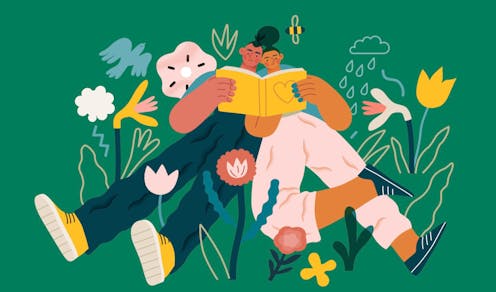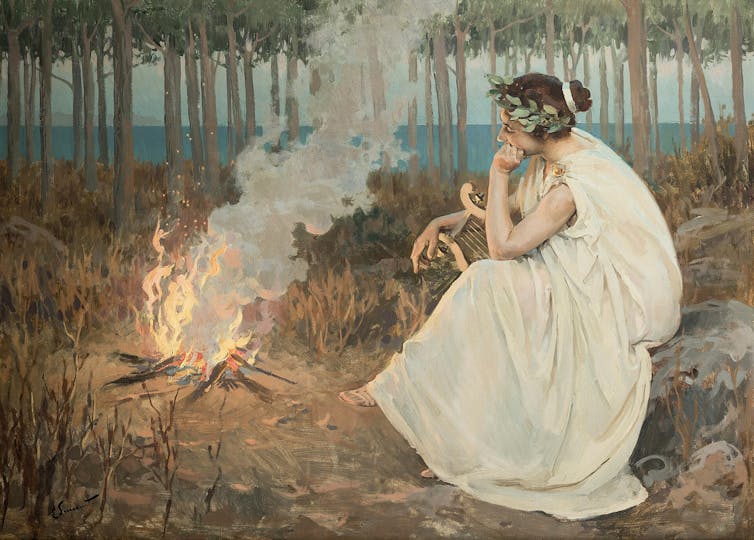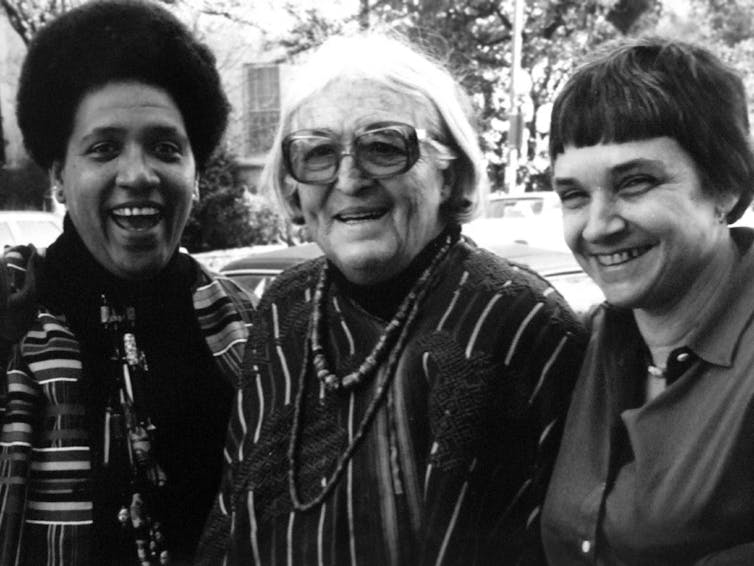
For many of us, the run-up to Valentine’s Day is spent seeking out the least cringe-worthy card in the shop to gift to our significant other, and show them how we really feel. But, unfortunately, Hallmark rhymes rarely mine the depths of love and desire.
So, if you’re looking for the perfect words for your loved one this year, why not share one of these poems, which attempt to express the wonder and complexities of romantic love.
1. Sonnet 106 by William Shakespeare (1609)

If you make a list of love poems, you’re obliged to include a Shakespearean sonnet, so I’ll start with a lesser known one, Sonnet 106.
In the poem, the bard compares the beauty of his lover to ancient poems that described beautiful knights and ladies. He declares that these older writers must have been prophets to know his lover’s true beauty. In fact, his lover is even more beautiful than these descriptions because the poets “had not skill enough your worth to sing”.
Here, Shakespeare addresses a problem that has plagued love poets throughout the ages: how to write of the love and beauty they feel and see when words may never match up.
Looking for something good? Cut through the noise with a carefully curated selection of the latest releases, live events and exhibitions, straight to your inbox every fortnight, on Fridays. Sign up here.
2. From the Irish by Ian Duhig (1997)
British-Irish poet, Ian Duhig confronts the same problem as Shakespeare in From the Irish. It is a poem that thinks as much about language as it does about love, but resolves in a sincere but frustrated attempt to tell his lover how he feels.
In trying to be precise in his use of language, he ends up telling his lover that their face “is like a slice of half-boiled turnip”.
This attempt to compare his lover’s face to the moon is not an insult, but instead part of his serious attempt to, as he says, “love you properly, according to Dinneen”.
3. Heart to Heart by Rita Dove (2004)
Rita Dove’s Heart to Heart likewise contemplates the relationship between love and language. In the poem, Dove, the former US poet laureate dismisses the clichéd ways in which we talk about the heart:
It doesn’t melt
or turn over,
break or harden.
The poet cannot tell her lover from “the bottom of it / how I feel” but gives it to them all the same.
4. He Seemed to Me Equal to the Gods by Sappho (translated by Anne Carson in 2002)
Closely aligned to the theme of romantic love is that of desire, and across the centuries poets have written about the torture of yearning. The Greek poet Sappho knew this even 2,600 years ago. Women are the objects of desire in her erotic poetry.

This poem, translated by the Canadian poet, Anne Carson, finds the poet watching her lover, which, says Sappho, “puts the heart in my chest on wings” but also renders her speechless. She describes the intensity and agony of desire:
fire is racing under skin
and in eyes no sight and drumming
fills ears.
These lines are a surviving fragment of a larger, lost poem, so what the poet might have “dared” at the end remains a mystery.
5. His Mistress Going to Bed by John Donne (circa 1590)

Perhaps more daring is John Donne’s His Mistress Going to Bed. Donne, an English poet who began writing in the 16th century, is considered one of the great love poets.
His Mistress Going to Bed is his attempt at seduction, undressing his lover across the poem’s lines: “Now off with those shoes, and then safely tread / In this love’s hallow’d temple, this soft bed.” The sexual act is seen as one of union: “As souls unbodied, bodies uncloth’d must be, / To taste whole joys.”
So prepared is the poet, we discover by the poem’s end, that he is already naked and ready to go to bed with his love.
6. Poem II by Adrienne Rich (1978)
As partnerships evolve, the initial intensity of sexual passion morphs into a more everyday, although no less exciting kind of love.
Poem II from Adrienne Rich’s sequence Twenty-One Love Poems describes the poet waking in her lover’s bed following a dream. She tenderly writes: “You’ve kissed my hair / to wake me.”

The poem is a warm and intimate portrait of the love between two women, with Rich declaring:
I laugh and fall dreaming again
or the desire to show you to everyone I love,
to move openly together.
In this, the poet acknowledges the ease and depth of her love but also makes subtle reference to the lack of acceptance of homosexual relationships in the 1970s, when the poems were first published.
7. An Amish Rug by Michael Longley (1991)
Michael Longley, the Irish poet who passed away in January, presents a similarly private scene of an established relationship in his poem, An Amish Rug.
Describing the handmade rug he gifts to his wife, the poet contrasts the simplicity of the Amish lifestyle with its vivid woven colours.
If hung on the wall, the rug will become a stained-glass “cathedral window”. Or, it may be placed on the floor so that “whenever we undress for sleep or love / We shall step over it as over a flowerbed”.
There’s a Valentine’s gift to live up to.
8. The Orange by Wendy Cope (1992)
Wendy Cope’s The Orange almost unexpectedly turn into a love poem, as the poet describes the increasing “peace and contentment” that comes from sharing a “huge orange” with her colleagues. This, she says, “made me so happy, / As ordinary things often do”.
Its description of a lovely but ordinary day ends with the affirming line “I love you. I’m glad I exist,” revealing that profound reflections can come from small moments.
Ellen Howley does not work for, consult, own shares in or receive funding from any company or organisation that would benefit from this article, and has disclosed no relevant affiliations beyond their academic appointment.
This article was originally published on The Conversation. Read the original article.







